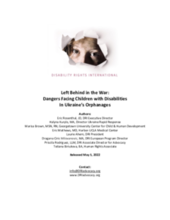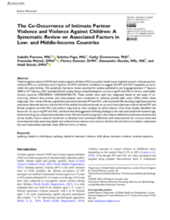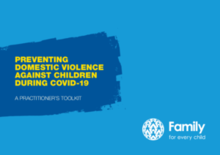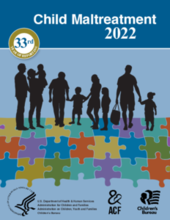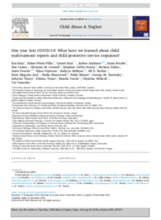Displaying 41 - 50 of 1070
In the present report, the UN Special Rapporteur on the sale and sexual exploitation of children, including child prostitution, child pornography and other child sexual abuse material, describes the activities undertaken in relation to the discharge of her mandate since her previous report to the United Nations General Assembly. She also presents a thematic study on addressing the vulnerabilities of children to sale and sexual exploitation within the framework of the Sustainable Development Goals.
Produced with KESCA, ‘Myths vs Reality’ highlights some of the key misconceptions associated with voluntourism, including how this could unintentionally support institution-related trafficking.
This session on the central role of social protection in tackling child labour took place as part of the 5th Global Conference on Child Labour in Durban, South Africa, on May 18, 2022.
This report aims to provide a rapid assessment of the risks of trafficking and exploitation created by the war in Ukraine and the gaps in the current anti-trafficking response, in order to identify what needs to be done now to reduce and prevent trafficking before it is too late. This rapid assessment is based on desktop research; interviews/discussions with organisations, experts and participants in the anti-trafficking response including volunteers, translators, refugees, and displaced people; and a field visit to Poland.
Disability Rights International (DRI) published these recommendations in response to a visit to Ukraine’s institutions for children with disabilities in late April 2022. DRI visited three facilities for children aged six to adult, and one “baby” home for children from birth to age six.
DRI found that Ukraine’s children with disabilities with the greatest support needs are living in atrocious conditions – entirely overlooked by major international relief agencies and receiving little support from abroad.
This systematic literature review searched for studies published in any language between 1st January 2000 to 16th February 2021 and identified 33 studies that provided findings for co-occurring IPV and VAC in 24 low- and middle-income countries.
This article explores neighbour protective intervention (protective informal social control) in child neglect. It draws on narrative interviews with seventeen female parents from seven settlements in Ghana.
Family for Every Child Alliance members strengthened and adapted their service delivery to provide vital support in the changed circumstances. This Toolkit uses their experiences and lessons learned to guide practitioners to support children and families to prevent domestic violence from affecting children. With specific resources focused on prevention and response, a variety of practices from around the world are given here, to encourage cross-learning and exchange and to generate new learning across the alliance and beyond.
Child Maltreatment 2022 (the report) is the latest edition of the annual Child Maltreatment report series. The report is used by researchers, practitioners, and advocates throughout the world as a source for national child welfare data. Jurisdictions provide the data for this report via the National Child Abuse and Neglect Data System (NCANDS). NCANDS was established as a voluntary, national data collection and analysis program to make available state child abuse and neglect information. Since 1991, child welfare agencies in the 50 states, the Commonwealth of Puerto Rico, and the District of Columbia have collected and submitted data for NCANDS.
This study is part of a larger initiative using an international platform to examine child maltreatment (CM) reports and child protective service (CPS) responses in various countries. The first data collection, which included a comparison between eight countries after the pandemic's first wave (March–June 2020), illustrated a worrisome picture regarding children's wellbeing. The current study presents the second wave of data across 12 regions via population data (Australia [New South Wales], Brazil, United States [California, Pennsylvania], Colombia, England, Germany, Israel, Japan, Canada [Ontario, Quebec], South Africa).




